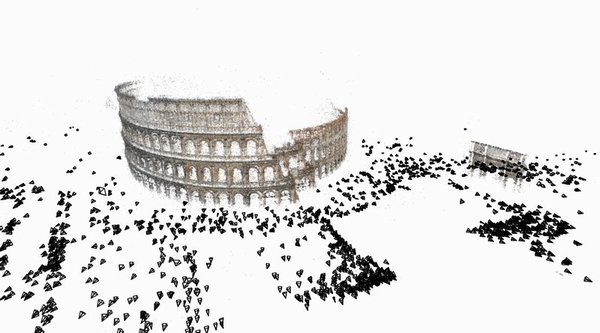 UW CSE’s computer graphics team— including professor Steve Seitz, graduate student Ian Simon, graduate alumnus Noah Snavely, affiliate professor Rick Szeliski, and acting professor Sameer Agarwal— has developed a new computer algorithm that automatically reconstructs an entire city from hundreds of thousands of tourist photos in about a day (of computing). The tool is the most recent in a series developed at UW CSE to harness the increasingly large digital photo collections available on photo-sharing Web sites.
UW CSE’s computer graphics team— including professor Steve Seitz, graduate student Ian Simon, graduate alumnus Noah Snavely, affiliate professor Rick Szeliski, and acting professor Sameer Agarwal— has developed a new computer algorithm that automatically reconstructs an entire city from hundreds of thousands of tourist photos in about a day (of computing). The tool is the most recent in a series developed at UW CSE to harness the increasingly large digital photo collections available on photo-sharing Web sites.
The newly developed code works more than a hundred times faster than the previous version. It first establishes likely matches and then concentrates on those parts. The code also uses parallel processing techniques, allowing it to run simultaneously on many computers, including remote servers connected through the Internet. The new, faster code makes it possible to tackle more ambitious projects.
Earlier versions of the photo-stitching technology are known as Photo Tourism (licensed to Microsoft, augmented, and now offered as Photosynth). In the near term, the “Rome in a Day” code could be used with Photo Tourism, Photosynth or other software designed to view the model output.
Read the UW News article here. More information on the research project here.
Here’s a terrific TechFlash post, “UW’s latest photo technology could supercharge Photosynth.” Also see posts on MSNBC “Cosmic Log,” here, and on Slashdot, here. Brier Dudley’s blog in the Seattle Times here. itbusiness.ca here. NewScientist here. National Geographic News here. Popular Science here.

